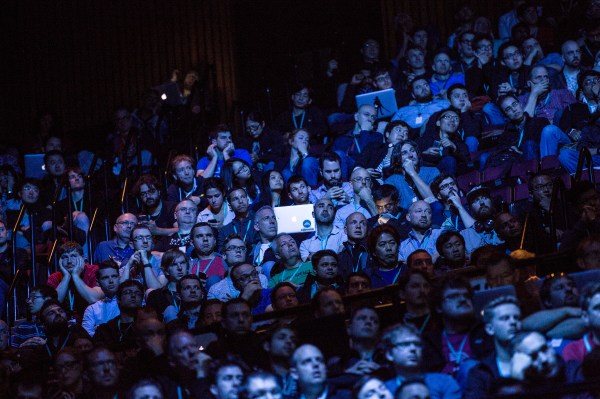Extra Crunch offers members the opportunity to tune into conference calls led and moderated by the TechCrunch writers you read every day. This week, TechCrunch’s Frederic Lardinois and Ron Miller discuss major announcements that came out of the Linux Foundation’s European KubeCon/CloudNativeCon conference and discuss the future of Kubernetes and cloud-native technologies.
Nearly doubling in size year-over-year, this year’s KubeCon conference brought big news and big players, with major announcements coming from some of the world’s largest software vendors including Google, AWS, Microsoft, Red Hat, and more. Frederic and Ron discuss how the Kubernetes project grew to such significant scale and which new initiatives in cloud-native development show the most promise from both a developer and enterprise perspective.
“This ecosystem starts sprawling, and we’ve got everything from security companies to service mesh companies to storage companies. Everybody is here. The whole hall is full of them. Sometimes it’s hard to distinguish between them because there are so many competing start-ups at this point.
I’m pretty sure we’re going to see a consolidation in the next six months or so where some of the bigger players, maybe Oracle, maybe VMware, will start buying some of these smaller companies. And I’m sure the show floor will look quite different about a year from now. All the big guys are here because they’re all trying to figure out what’s next.”
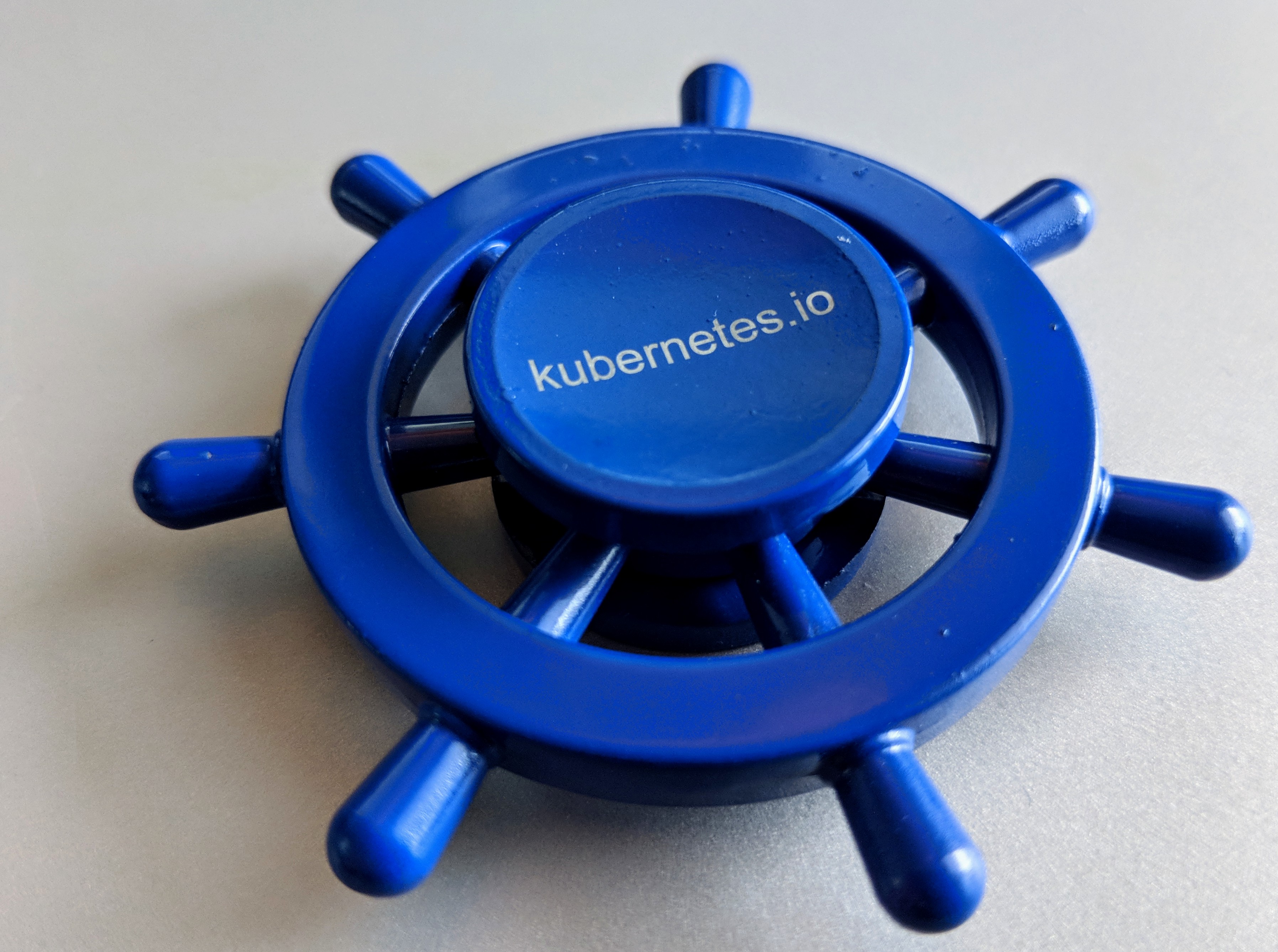
Frederic and Ron also dive deeper into the startup ecosystem rapidly developing around Kubernetes and other cloud-native technologies and offer their take on what areas of opportunity may prove to be most promising for new startups and founders down the road.
For access to the full transcription and the call audio, and for the opportunity to participate in future conference calls, become a member of Extra Crunch. Learn more and try it for free.
Frederic Lardinois: All right. Welcome everybody and thanks for joining us. My name is Frederic Lardinois. I’m an editor for TechCrunch and with me is Ron Miller, our intrepid enterprise reporter. We’re both currently in Barcelona, currently covering the Cloud Native Computing Foundation’s KubeCon/CloudNativeCon conference, which is really a conference about Kubernetes.
Ron, you went to the last European event. They do two of these every year, one in Europe, one in the US. Maybe just to set the tone, because it’s a such a community, that it’s worth just talking about the atmosphere. Maybe you can compare this year’s event to the one you experienced in Copenhagen last year.
Ron Miller: Sure thing. So last year was my first experience with it. It was something to see, actually, because I think last year we caught a moment where Kubernetes was really taking off. The energy in the place was pretty palpable. It was cozy, and it was friendly. It had this great vibe going on.
That’s not to say that’s not what’s happening this year, but it’s a much, much larger event. It’s in the Fira Gran Via, which for those of you who don’t know, is where they hold Mobile World Congress. I don’t want you to get the idea that this is as big as Mobile World Congress, but they are taking up three of the eight halls that make up Fira Gran Via. So it’s a substantial conference, and there are just a lot more people.
It feels much bigger. That in itself produces a different feeling. The vendor floor, which last year was divided into the big vendors; Red Hat, Microsoft, AWS, Google, and so forth, IBM. All of these big names were in one room, and all of the start-ups were in another room. This year it’s just one huge floor. It’s pretty amazing. I don’t have the exact numbers between last year and this year, but I can tell you it feels a lot bigger.
Frederic: Yeah. From the numbers I saw, last year there were about four to five thousand people in Copenhagen. Then at the last event, they organized it was about 8,000 in Seattle in December of last year. This year the official number is 7,700. There’s a wrinkle to those numbers. Of course, European events tend to yield smaller than US events.
But the Cloud Native Computing Foundation was originally hoping for about 10,000 or more people here, and that didn’t quite materialize, even though it’s still a massive conference at that size. The official reason they give for that is that after Seattle sold out, a lot of people registered for this event very early, and that threw off the metric slope and stuff.
There’s plenty of press releases out there that say there might be up to 10,000 people here. That did not quite happen, but it’s still a massive, massive event.

(Photo by Ramon Costa/SOPA Images/LightRocket via Getty Images)
You mentioned the show floor which takes up one of the halls of the Fira here, which is one of the halls where they hold Mobile World Congress. It’s just massive too. Everybody is there. It’s one of the few events where you see Microsoft and Google and Red Hat and VMware and Oracle. I think Adidas has a booth outside. It’s just quite the spectacle.
I have to say as far as the atmosphere goes, compared to Seattle it’s just a different conference center. It’s just spread out so much. It doesn’t quite feel the same. It doesn’t quite feel that intimate, but in many ways, that’s what happens when you have such a massive conference that keeps growing.
I think the most interesting question is, Ron, why do you think this conference keeps growing?
Ron: That’s a good question. That is the key question, Cloud native technologies, of which obviously Kubernetes is the most substantial project in the Cloud Native Computing Foundation, is really beginning to find its legs.
The idea of building distributed applications, of using containers and containerization which was, as you know all too well, first popularized by Docker maybe in the 2013, 2014 timeframe.
As people started using these containers to change the way they develop, rather than putting a monolithic application onto a VM in the Cloud, they started putting them in containers, and then containers begot microservices, which is a way of breaking down these programs even further into smaller and more discreet pieces.
As that happened, the need for all these tools began to develop. People are changing the way that they develop software. I don’t think it’s happening all at once, but people are definitely curious about this because it sort of fits with the whole agile leap because you’re continuously delivering software, and it extends that ethos to a software-driven continuous delivery model. It’s pretty interesting.
I think developers are digging it, and as they begin to really get into it, the popularity grows. These guys talk to each other. It’s an open-source project. It’s taking off. You can see it.
Frederic: Yeah. I don’t think I’ve ever seen an open-source project that took off quite like Kubernetes over the last five years. That’s important to remember. It’s only been five years since Kubernetes launched. There’s a whole ecosystem now of companies.
Let’s talk for a second about five years of Kubernetes because the Cloud Native Computing Foundation is making a big deal out of that. All the signage here is about the five year anniversary. I had a chance today to talk to some of the founders of the Kubernetes project at Google. Craig McLuckie who then left Google, founded Heptio and sold that to VMware. Tim Hawkins who’s still at Google, who is the technical brain behind the whole operation.
It’s interesting to remember that in many ways Kubernetes, as they tell it now — I don’t think Craig McLuckie was really able to tell that story at Google the same way as he’s able to tell it now — Kubernetes was more or less a reaction to the fact that AWS had won the virtual machine wars in the Cloud.
In many ways, Kubernetes was a reaction to that as Google tried to figure out how to make this work. It was never obvious that Kubernetes would become open source because Kubernetes is based on Google’s Borg. Borg just runs all of Google’s data centers. It’s more or less the same technology that makes all of Google’s services run. Five years of Kubernetes and very few of these projects have ever taken off this fast.

(Image via Getty Images / Lidiia Moor)
I’ll just put this to you again, Ron. Why did Kubernetes take off?
Ron: Well, I’m looking at the article that I wrote last year on the four-year anniversary. One of the things that Dan Kohn said, who is the director of the project at the Linux Foundation, he pointed out that Google could have gone in a few directions with it.
They could have created a commercial product and sold it to Google Cloud. They could have open-sourced it and had a strong central lead. But they decided to bring it to the Linux Foundation. But they didn’t even just do that and build a Kubernetes project which a lot of people are still curious about. Why wasn’t it the Kubernetes Foundation?
Early on, I think those guys had a vision. They had a vision that it wasn’t going just be Kubernetes. It was going to be this whole series of encasing tooling that would create this Cloud Native platform of services.
It took off because developers loved it. If developers love something, they’re going to use it and it’s going to grow and they’re going to contribute to it and it creates this flywheel. That happened.
Last year we saw this huge momentum in terms of the huge companies all coming on board. We had AWS. We had Microsoft. We had Oracle. I think there were like five or six or eight big, huge companies that came on in a two or three months period. That’s unheard of where all these big companies come together and agree on anything.
I don’t think they really do agree, but they saw what was happening. They saw that it had developed momentum and developed a mind share. They realized if they wanted a part of this, they had to be a part of this.
They joined the CNCF, and that’s pretty amazing because you can be sure that every one of those large vendors would have preferred to create their own orchestration ware and deliver it themselves in the same way that they’re delivering server lists now.
It’s their own little service that works within their own little service. But they couldn’t do it that way because developers just said, “Nope. It’s Kubernetes.” Kubernetes just clearly won.
Frederic: Yeah. At the time, there must have been eight of these orchestrations that were competing at the same time. Kubernetes definitely won. Maybe we can pivot over to talk about the news that came out of the event.
Google, for example, announced a couple of features that really showed that Kubernetes is ready for the enterprise, that it’s getting adoption. One of the things Google announced was GKE, the Google Kubernetes Engine.
They announced different release channels; rapid, regular, and stable. That’s what you do when you have customers like enterprises that want very predictable upgrade cycles, for example. Where they can say, “Okay, I can really like my application for this one version for now and stay on that. I know it’s going to run and then quietly test the other versions.”
The other, maybe even more of a sign, is that Google announced support for Windows Containers. The only people who use Windows Containers are the large enterprises. No developer at home really tries to build Windows Containers to take old Windows applications into the Cloud, but that’s exactly the moment we’re in now where these large companies are figuring out how to transition into the Cloud. Containers make that far more efficient than virtual machines ever did.
We also then have to learn how to really write for those new systems, but also for existing legacy applications that you can just package into a container and bring over. I think that’s kind of a sign what’s happening right now. Any other news announcement that stood out for you, Ron?
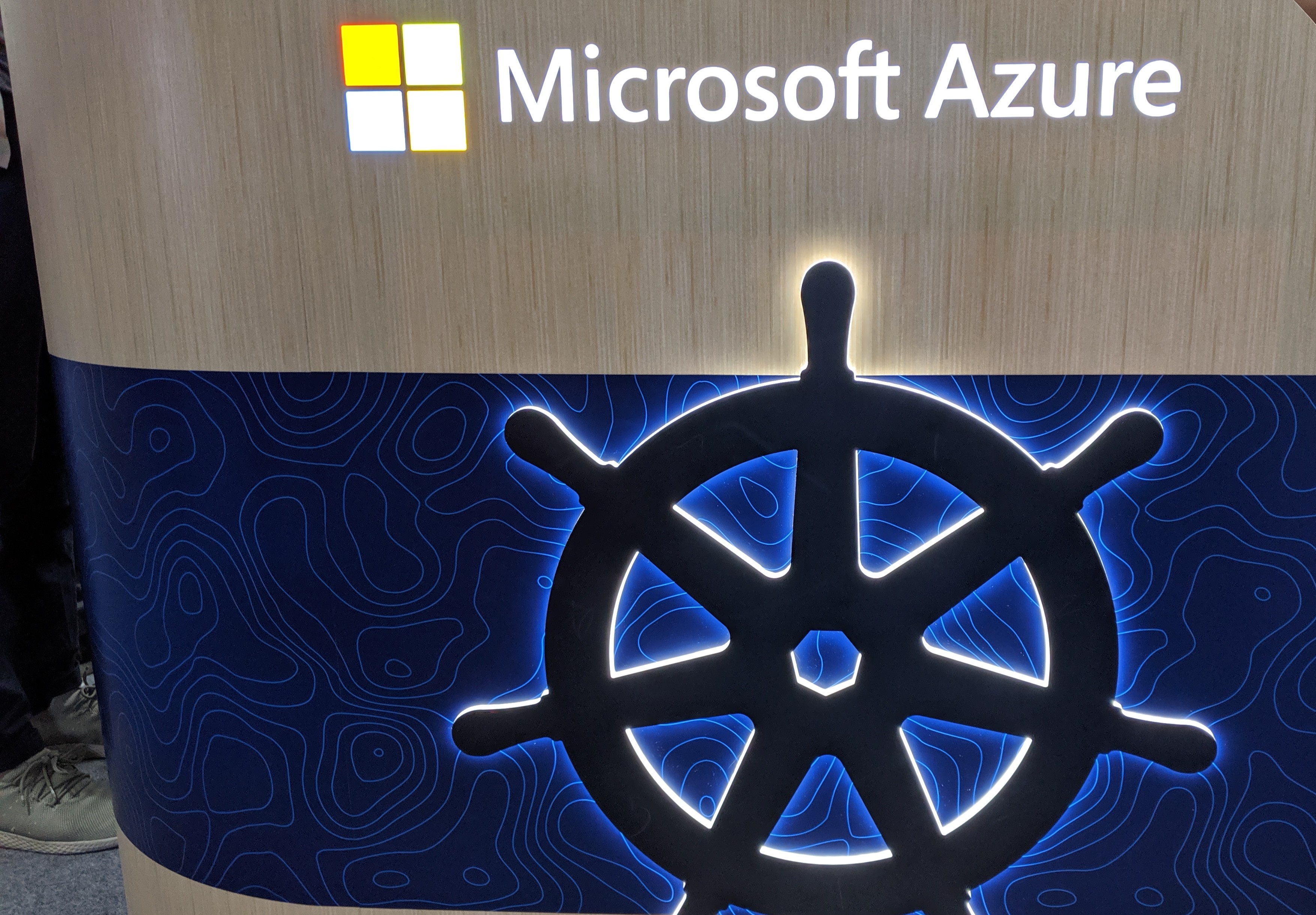
Ron: There was one from Microsoft where they put out the service mesh. You wrote about it. I’m not as familiar with it.
Frederic: The Service Mesh Interface. It’s a mouth full, SMI. That’s a good example that we always have to remember that the Cloud Native Computing Foundation and this whole event is not just about Kubernetes but the whole ecosystem of other Cloud Native technologies around that.
SMI is a project around service meshes. Service mesh brings more intelligence into the network. As developers don’t just start adopting containers but also other technologies like microservices for example. You end up with all these API endpoints in your network.
You can either hard code all of that into your application, how those services then encrypt data for example, and talk to each other and how packages are managed. Or you can let the service mesh do that and bring the intelligence to the service mesh where then the service mesh handles that. There’s a couple of these that exist today, Istio, Linkerd, for example are the big ones. HashiCorp has Consul Connect, I think that’s another one.
The problem with this is there’s suddenly all of these service meshes that developers then have to support. Microsoft got together with a couple of companies, including Solo, Canonical, Docker, Pivotal, Rancher, Red Hat, and VMware, to more or less create a standard way to talk to these service meshes.
Now interestingly, the company behind Istio, Google, is not part of this. IBM, also part of this whole Istio thing, is not part of this. Raises some interesting questions because Istio is also not part of any of the large foundations. While everybody here at the Cloud Native Computing confab talks about Istio as if it were part of the Cloud Native Foundation.
Ron: Right.
Frederic: It’s an open source topic that belongs there to some degree or at least into some foundation. It’s not part of that, and it raises questions about what the plans are for that going forward. The service mesh is a really interesting technology that also shows that Microsoft has changed, and Microsoft is not an open source project.
You have any take on that?
Ron: There are a couple of things that I could unpack from that. One is the way that these companies are working together and the way that they’re not. Cloud Native, in and of itself, the ethos is that you can run on any cloud. You can take whatever you create on one cloud and run it on another cloud.
You can just unpack it and say, “You know what? I don’t want to run it here anymore. I want to run it here and in this cloud as well.” Even that is speaking to the fact that these companies have to work in concert a lot of the time.
One of the things that we’re seeing with the service mesh, that you define so well, is that unlike Kubernetes where we very quickly came to a conclusion that Kubernetes is the orchestration engine and ding, ding, ding, hold all calls, we have a winner.
We are in a very early stage of service mesh where we don’t have a winner. We don’t have a clear winner, and as you pointed out, you really need as a developer to support all these different ones. That’s another kind of interesting aspect of it.
A few years ago I heard Satya Nadella speak, and he said, “It’s incumbent upon the big platform vendors to work together when it makes sense because customers are going to demand it. But at the same time, they’re going to compete fiercely to do that.” I think what you see coming together here is a huge illustration of that statement.
Cloud Native, by its nature, should work across all clouds. If it doesn’t, it isn’t really Cloud Native.
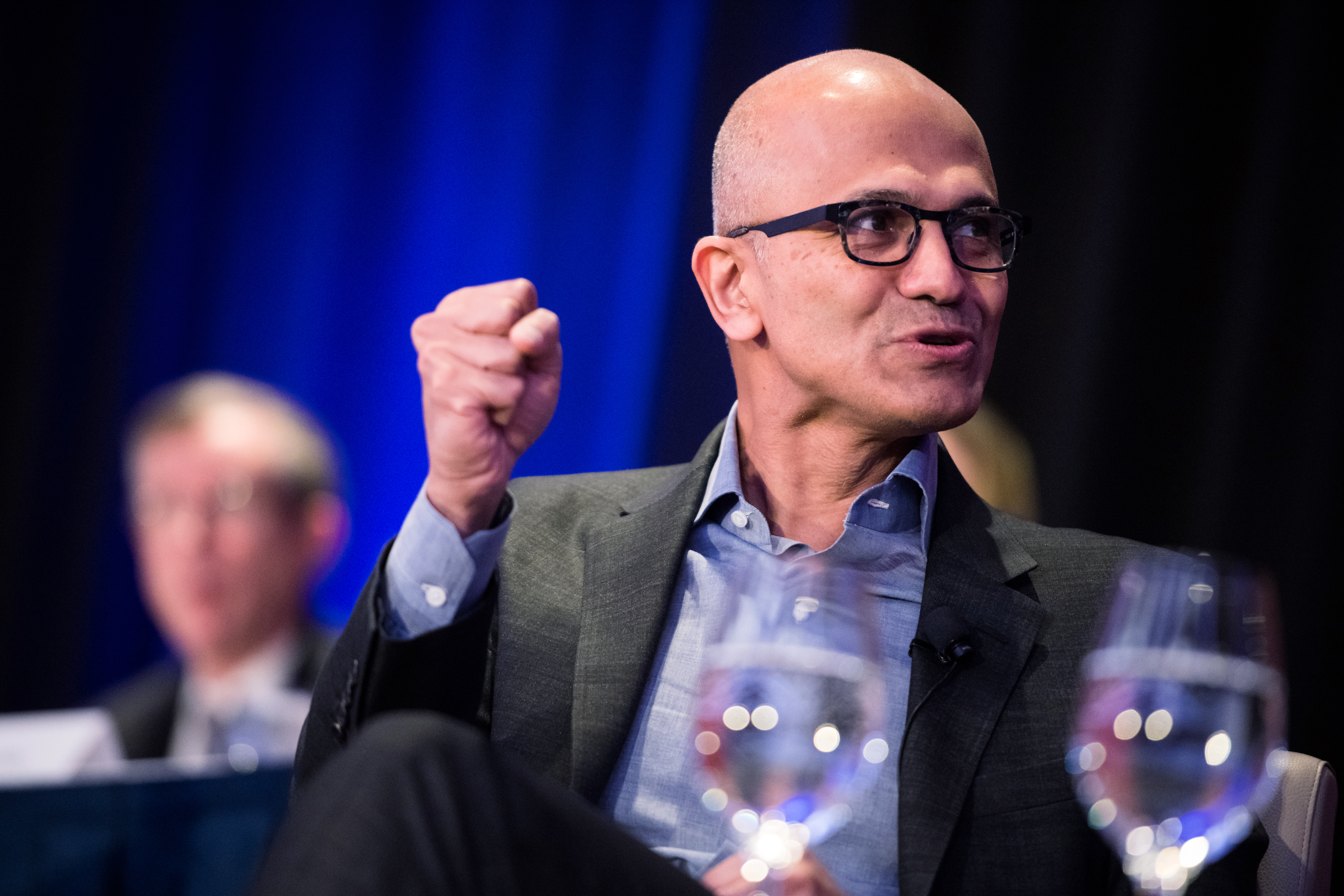
(Image via Mark Kauzlarich/Bloomberg via Getty Images)
Frederic: Absolutely. Maybe to sort out one more wrinkle about Istio, because it was one of the themes, is whether this going to happen to Istio. One of our analyst friends, Blair Hanley Franks from ISG and formerly at VentureBeat, one of our competing publications, argued that maybe Google is holding back here because it saw what happened with Kubernetes where it lost control over the open source.
By using Istio as an open-source project that is not part of a foundation, that doesn’t have governance, it can still really control the direction of what happens to Istio. Now, I’m not sure that’s the sole reason, but it’s an interesting wrinkle in this story where Istio, a project that isn’t even part of this was really one of the most talked about things.
Any other themes that you saw, Ron?
Ron: Well, you know one of the things that I’m learning about all of this stuff is the more that I learn, the less I realize I know. There’s just so much to know. I think that the companies that are trying to do this are facing that as well, especially the companies who are running a lot of legacy applications.
I was at an event, a pre-conference event on Monday. There was a vendor there, and they were talking about how they considered themselves Cloud Native and that they use continuous delivery and all of that. But their model was two weeks of software developing and two weeks of QA and security checks.
I’m thinking to myself, “Well that’s not really continuous delivery and that’s not really Cloud Native.” It’s more like semi-waterfall.
There are a lot of companies trying to figure out how this all works. Some of the big vendors that I’ve talked to, and I’ve spoken to Google and Red Hat and Microsoft and a bunch of others, what I’m getting from them is that when you get into the big companies, there has to be a lot of hand-holding and consulting and trying to get them to really begin to adopt this ethos.
It’s not something in any large corporation where you have governance and security people and all of those people who are paid to put up a stop sign, who are going to suddenly say, “Oh, there’s a new way of doing this? We’re just going to acquiesce and not do our jobs.” That’s just not going to happen. So there has to be this discussion that goes on between the different components of these large companies to make this all work.
I think that when you come to a conference like this and it’s all about this one thing and you’re immersed in it, you get this sense that this is the way it is, and everybody’s doing this, and they all get it, and it kind of works magically, but it really doesn’t. It’s a lot of hard work and it takes a complete switch of the developer mindset to go from what they were doing before with virtual machines to this Cloud Native approach. That’s one of the big things that I’ve really found. It’s harder than it looks, and people are developing at different paces. That was interesting to me.
Frederic: The complexity, both technically and culturally, inside these companies is just really fascinating.
Let’s talk about the start-up ecosystem here as well.
I know just looking at the press releases for this event, there were two or three dozen press releases mostly from start-ups. I’ve never seen as many buzz words and press releases where I’ve had a hard time parceling what the hell those companies were actually doing. But I think there’s a real thing going on here because whenever one of these open-source projects becomes big, it spawns an ecosystem of start-ups. You saw that with OpenStack which is maybe the closest analog to what’s happening at the CNCF and with KubeCon and Kubernetes right now.
This ecosystem starts sprawling, and we’ve got everything from security companies to service mesh companies to storage companies. Everybody is here. The whole hall is full of them.
Sometimes it’s hard to distinguish between them because there are so many competing start-ups at this point, that I’m pretty sure we’re going to see a consolidation in the next six months or so where some of the bigger players, maybe Oracle, maybe VMware, will start buying some of these smaller companies.
And I’m sure the show floor will look quite different about a year from now. All the big guys are here because they’re all trying to figure out what’s next.
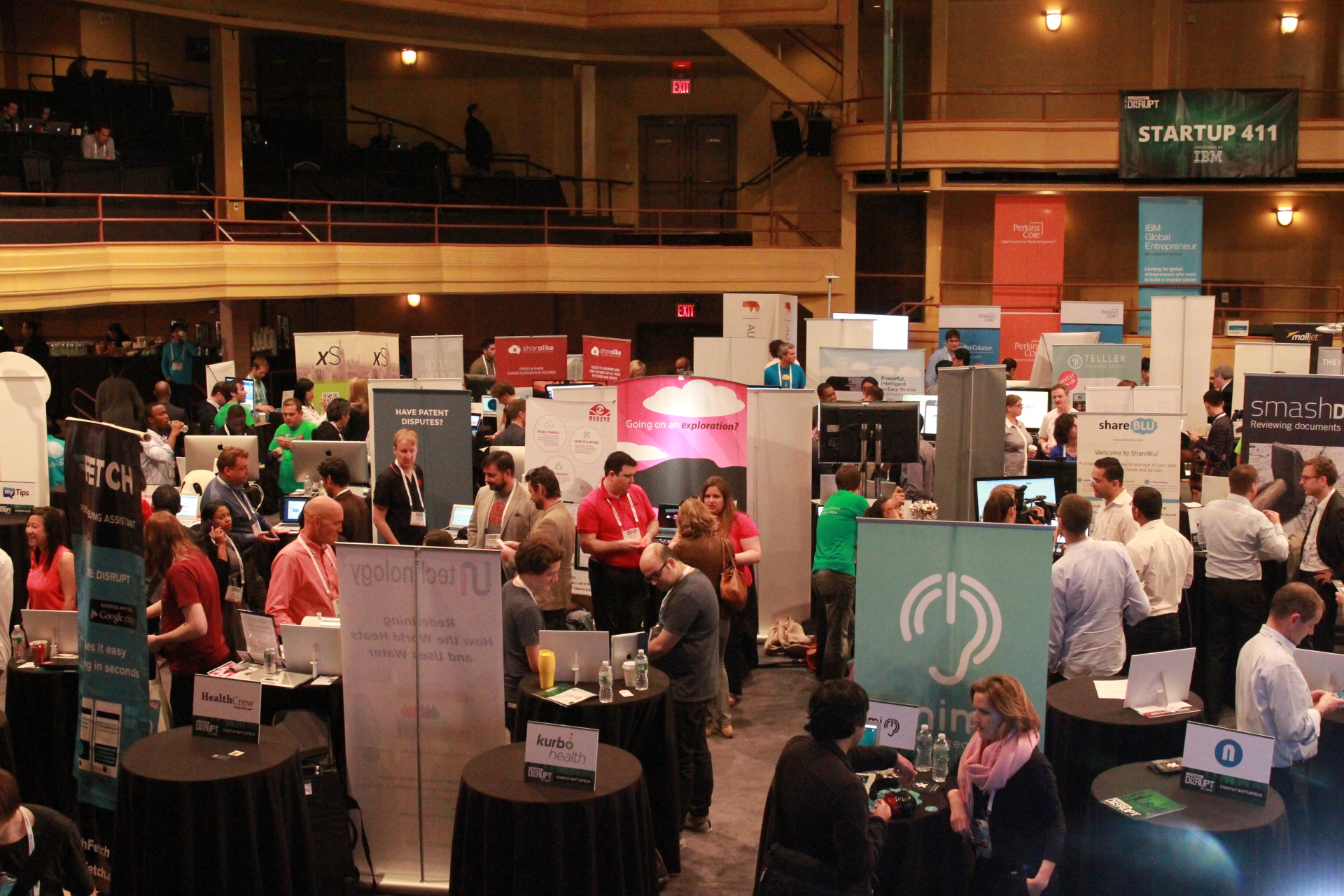
Frederic: Any start-ups for you, Ron, that stood out?
Ron: One that I have spoken to a couple of times in the last few weeks is Solo.io. They’re trying to simplify the management of the service meshes that you talked about earlier. As you pointed out, there’s this scrum going on in the service mesh game.
What Solo is trying to do is create a number of open-source tools to work under the hood, to manage all that. They also created this hub where you can launch whichever service meshes you want, and you can manage them all within this hub. Then you can run different services on different service meshes.
It’s almost like an app store for these services meshes. That sounds like a pretty cool idea. It’s all open-source. It’s not something that companies have to pay for. I think it’s something that’s really filling a need because as you did point out, there are all these different service meshes out there.
If you’re an IT person and you have to manage it, how do you do it? This gives you a way to do it in an easy, visual interface. Eventually, they’ll try to make money by dropping things into that app store concept, that costs money or having partners do it and then taking a percentage much in a way that Apple does.
That was the most interesting one to me so far.
Frederic: That really shows that containers are becoming the model to distribute software to some degree as well, which is kind of interesting. DigitalOcean is here, the hosting company that probably a lot of people remember for their five dollar virtual machine. They’ve really wanted to become more of an AWS competitor. They have a Kubernetes project, and they have a marketplace. Those ideas are quite similar across companies.
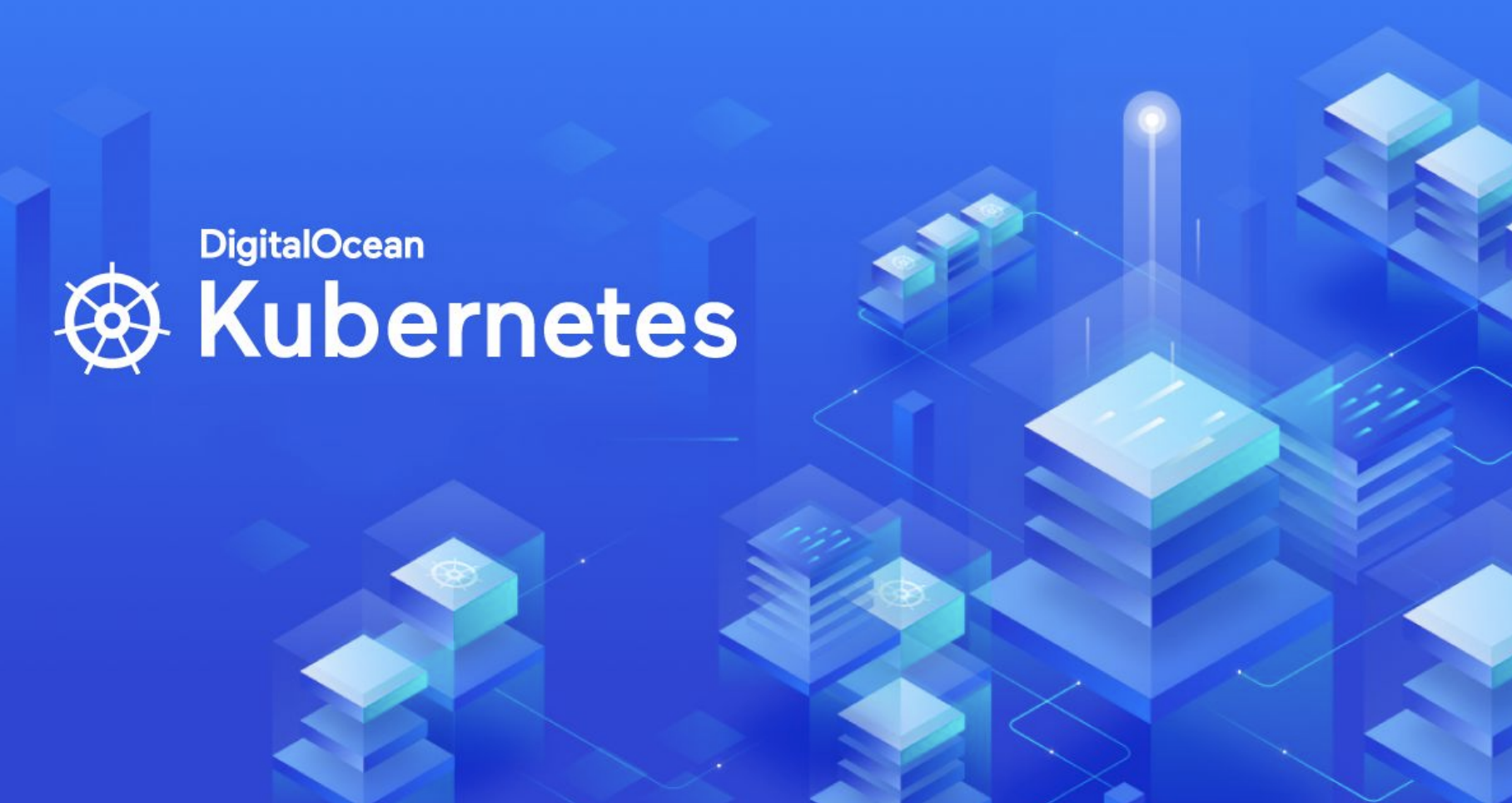
Caller Question: You mentioned this potential consolidation of start-ups, but I would be curious if there were any announcements in your mind that could be an area of opportunity for future start-ups or founders looking to work on the next thing? Thanks.
Frederic: That was a good question. You want to take that first, Ron, and I’ll take stab after?
Ron: Yeah. I can’t give you specifics, necessarily, but I can tell you that at the keynote yesterday morning there was a discussion about maybe five or six adjacencies that are very, very early in their development. The thing about this whole set up is the idea that there’s going to be a whole platform of services at some point because it’s going to be considered like a Cloud Native platform.
I think that if you look at those early stage adjacent projects, if you go to the Cloud Native Computing Foundation website and you look at some of those, a lot of them would be in the sandbox stage, is what they call it. I think you would find a number of projects where start-up founders could begin to fill in.
And then if you just pay attention to the needs of the community, what we’ve found is we’ve watched this over the last two, three years, is that the needs balloon. The more you scale this stuff, the more needs reveal themselves and the more opportunities there would be for start-ups. I think there definitely are opportunities for start-ups.
I wrote an article last year after the Copenhagen KubeCon, and I talked about how it had given rise to this huge ecosystem. Last year when I wrote about it, I think it was $4 billion already in venture capital in the Cloud Native ecosystem. I’m willing to bet that it’s a bit higher than that now.
Frederic: And specifically, I would say that service meshes are an area where there’s a lot of development right now. There are some early start-ups there, but it’s still very, very early on. So I think there’s quite some room there.
When I talked to companies, one issue they all say is how to manage storage. There are a couple of projects, I think Rook is one of the storage projects in the CNCF. There are companies that have built around that. Storage still strikes me as a project that needs some work.
There might also be some opportunities in just creating new tools for building hybrid clouds, for example, which is something obviously these technologies enable. But storage strikes me as something where there’s room still for companies to really improve on something that’s going on.
Caller Question: Yeah. A quick question on service meshes. The Envoy community has had some news in the past 24 hours about the growth of that community and the momentum in their project. Have you heard any chatter at the event about the possibility that the Envoy community could create something like its own management layer, an Istio-like functionality within the Envoy? If so, what impact might that have on the Istio project?
Frederic: I have not heard a lot of chatter about Envoy at this event. Ron, have you?
Ron: No, I mean there’s certainly talk about managing things at the edge which I believe is what Envoy is designed to do. If I’m not mistaken. Nothing specific. No specific chatter that I’ve heard, which doesn’t mean that it’s not happening. There are a lot of conversations that are happening. And as we said, it’s a pretty huge event. It’s possible that it’s happening, but it’s nothing that I’ve heard yet.
Frederic: Envoy was not very heavily featured in the keynotes as well, which is kind of interesting. But it’s obviously one of the most popular projects. It’s one of those projects that can be taken out of the context of Kubernetes and used in other forms of this. In many ways, it still functions for microservices. But not much chatter at this event.

(Image via Getty Images / Neustockimages)
Well, let me give you one last question, Ron. When I was talking to the Kubernetes founders, Craig McLuckie said that in five years he hopes Kubernetes is just already boring. Do you think that’s what’s going to happen? Will this just be boring in five years and normal and nobody would be talking about it anymore?
Ron: You know given the state in which it’s developed to this point, I wouldn’t bet against that. Who knows what’s going to happen? As we’ve pointed out here, today, for every solution, there’s a new set of problems that reveal themselves as they get deeper and deeper into this.
The clusters get bigger, and the requirements get larger. New needs to develop. But I think it’s possible that in five years that a lot of the questions will be answered and that a lot of this will be just what developers do, that most developers develop in a Cloud Native way, and we won’t be talking about it as much as we are right now. I think it’s just inevitable.
Frederic: Yeah. We’ve gone through this cycle with other projects as well. The Canonical example is obviously OpenStack, where a few years ago the conferences were pretty much at this size too, and they shrunk over the years because it’s just faded into the background in many ways.
It’s become standard technology and sound industry. It’s just not attracting. It’s just stable. It just works, right?
The business that happens around it is not the event that you have to be at to learn about the technology because the technology has become the standard at this point. We’ve seen it with OpenStack. We’re probably seeing it with CloudFoundry right now. I’m sure that’s exactly what’s going to happen to these events as well.
Until then though, I think Ron and I are going to go drink a gin and tonic. I would like to thank everybody for joining us today. Thanks for being an Extra Crunch subscriber. That’s what makes this possible, makes it possible for us to come to Barcelona, to cover this. Appreciate it. Bye.
Ron: Thank you everyone.
